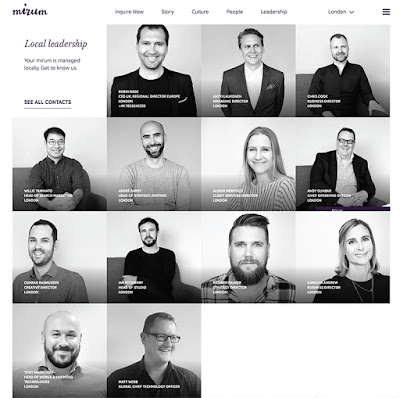
Campaign published a perspective from Mirum Client Services Director Ali Merifield, who sought to explain “why innovation stalls without diversity.” Merifield presented lots of progressive opinions and theories, yet offered no case studies on how her digital agency has benefited from executing and embracing diversity. Indeed, a look at the London office leadership doesn’t display much diversity. And to seemingly prove her own point, the work isn’t very innovative.
Why innovation stalls without diversity
By Ali Merifield
Leaders who want to drive innovation through diversity need to be willing to expose themselves to some discomfort and awkwardness, writes Mirum’s head of client services.
Innovation. Every company talks about what it is, how to achieve it, why it is needed, what it costs. However, one of the core ingredients often missed is diversity. Silicon Valley has long suffered from a diversity problem, and it could be stifling the innovation it has been built on.
Leaders who want to drive innovation through diversity need to be willing to expose themselves to some discomfort and awkwardness. It might slow down process and expose some shortcomings and weaknesses elsewhere in the system.
Diverse teams mean people coming together from different backgrounds, experiences, cultures and educational baselines. In tech, where rapid development is valued, the time it takes a diverse team to get into a rhythm of working together may be longer than the norm.
Problem solving and product development won’t be as comfortable, or as much fun, as working in a homogenous group straight out of the same social, cultural and educational background. An unvaried group will likely feel buoyed up by each other, by their shared thinking and agreement, confident that they have cracked the problem. But the shared assumptions and tacit agreement is what will cause them to fail.
The more diverse group, having questioned each other more, disagreed and debated, probably won’t have as much confidence that they have found a solution at all. However, the fact that they bring different thinking and experiences, can question assumptions and challenge the status quo, means they are far more likely to achieve a more innovative solution.
It feels good to be in a group of people who agree firmly and fast. It is harder to have to navigate unchartered waters with people who think very differently from us. So how can businesses ease that process to encourage the diversity needed to truly innovate?
The first challenge is to understand that diversity is about more than hiring and quotas, and goes beyond the HR department. Every employee can be an advocate for their company, and every employee has a network they can reach. Quotas simply don’t work when the pool in which you fish is already self-selecting, so companies need to find inventive and unexpected ways to bring in candidates.
This is all part of ensuring your employees represent your customers. Consumers are as diverse as our workforce should be, in order to innovate and ideate for them, a point that Lesley Miley took up at Twitter as VP Engineering, the only black engineer in a leadership position at the time, prior to leaving for Slack.
In 2014, Pew Research Center outlined Twitter’s user profile as 27 percent African American, 25 percent Hispanic Americans and 21 percent women. Yet only 3 percent of Engineering and Product employees at Twitter were African American or Hispanic and less than 15 percent were women. Miley argued that if the user base is not represented in the employee base, the product won’t fit the demand.
The Harvard Business Review (HBR) did a study on diversity and innovation and defined two aspects of diversity: inherent (traits you were born with such as gender and ethnicity) and acquired (traits you gain from experience, for instance working with certain demographics and living in other cultures). Two-dimensional (2D) diversity is where leaders of companies exhibit at least three inherent and at least three acquired diversity traits.
The study found that the employees at 2D companies are 70 percent likelier to report that the firm captured a new market. In the fast-moving tech industry, the risk of ignoring new ideas and missing new market opportunities could mean the difference between survival and collapse.
Diversity is a mindset; it takes a concerted effort to drive it through potential reticence, challenges and hurdles. It has to come from the top and encouraged throughout an organization because it takes determination to step outside the day-to-day demands of leading a company to look back in.
In “The View from the Cheap Seats,” Neil Gaiman tells the story of when he was invited to the first ever, state-sponsored science fiction convention in China in 2007. Intrigued, he asked what drove the turnaround in government from disapproving to encouraging Sci-Fi. A party official explained that while China is the best in the world at making phones, gadgets, the ideas for those products, the IP, come from elsewhere. They had toured North America, and asked people at Google, Microsoft, Apple a lot of questions. “We discovered that they all read science fiction when they were teenagers,” he said. “So we think maybe it’s a good thing.”
Whether it’s recruiting beyond our horizons or dreaming beyond our reality, the tech industry needs to think about diversity in the most diverse way possible. Championing diversity won’t be easy, but it will take you into new directions you didn’t expect.
—Ali Merifield is head of client services at Mirum.


No comments:
Post a Comment